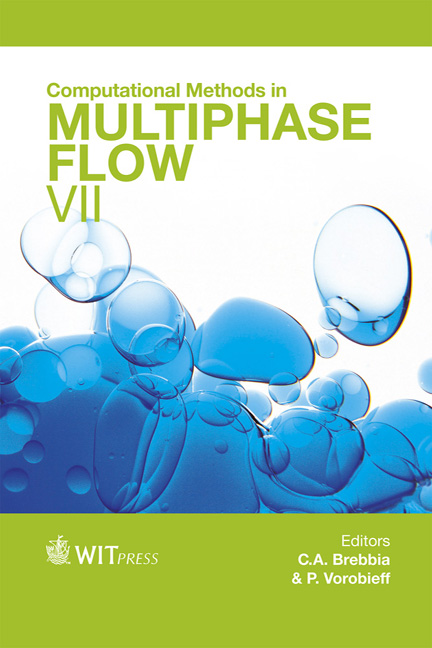SPH Modelling Of The Interaction Between Free-surface Flows Of A Viscoplastic Fluid And A Structure
Price
Free (open access)
Transaction
Volume
79
Pages
10
Page Range
399 - 408
Published
2013
Size
268 kb
Paper DOI
10.2495/MPF130331
Copyright
WIT Press
Author(s)
M. Labb´e & D. Laigle
Abstract
Debris flows are rapid, unsteady gravity-driven flows which can cause vast amounts of damage to infrastructures and endanger populations. It is therefore crucial to be able to properly model the behaviour of these flows, to better predict their impact. The aim of this study is to simulate these flows, determine how the presence of an obstacle in the path of the flow influences the propagation of the fluid, and to measure the pressures exerted by the flow on the obstacle, for various flow regimes. In this paper, we present a 2-D Smooth Particle Hydrodynamics (SPH) model capable of simulating a viscoplastic fluid. The Herschel-Bulkley model, which can accurately describe the behaviour of a muddy debris flow, is introduced in the SPH equations of Ferrari et al. (A new 3D parallel SPH scheme for free surface flows. Computers & Fluids, 38(6), pp. 1203–1217, 2009). The resulting code is validated by simulating a steady flow. It is then used to simulate a Herschel-Bulkley fluid propagating from a tank onto an incline and past a rectangular obstacle. The simulations confirm the existence of two regimes observed experimentally: a deadzone regime for small values of the Froude number and a jet regime for large values of the Froude number. Results show that the pressure exerted on the obstacle can be described by a combination of a gravitational component and a kinetic component, the latter taking over as the flow transitions from the dead-zone regime to the jet regime. Keywords: debris flows, SPH, viscoplastic fluid, numerical simulation.
Keywords
Keywords: debris flows, SPH, viscoplastic fluid, numerical simulation.





